ZAHRA KOMEYLIAN
AN INVERTED MOUNTAIN IS A WOMB (2025)
RED SOUP (2024)
WATER OVER MARSH (2022)
TWO PASSAGES (2021)
EMBODIED PRACTICES OF CARE SERIES: SWEEPINGS-STEEPINGS (2021)
GROUNDWORK (2020)
NOTHING IS A HOLE IN ITS OWN SKIN (2020)
CONTAINER FOR A PRECARIOUS RECORD (2019)
PLACES WHERE THINGS HAD BEEN PUT BECAUSE THEY HAD BEEN VIOLENTLY DISPLACED, AND PLACES WHERE THINGS FOUND THEIR NATURAL GROUND AND STABILITY (2018- 2019)
ABOUT/ CV
Red Soup
Solo presentation at NARS Foundation, New York August 30 2024 - Sep 18 2024Documentation by Shina Peng
Red Soup (2024) explores the relational and intrapsychic aspects of unburying the feminine psyche. A slow collection of works on paper (2022-2024) commit to drawing both as scribe of the psychic process and precipitate to depth work. Toiling with personal and archetypal symbols—from dreams, psychoanalytic work and the myth ofInanna’s Descent—Red Soup demarcates the ‘death of a gestalt,’ breaking with patriarchal ego ideals toward a matriarchal consciousness. (Essay below)


In the Soup
We often say we are in the soup as we navigate something undifferentiated. The ambiguity of ingredients that were once separate, have merged – in this case, taking form in one delicious entrée.
The soup’s red is sanguine, the what is that is not always seen. Red hides in the boundary between the visible and invisible. Seeing red is what draws us in, what lights us up. The red has been associated with the devil, because it is what tempts us into the world, ready to catch fire over anything. Red can overwhelm, and yet there is a sensitivity in red, as when blood rushes to the skin to produce inflammation, the wound that heals.
Komeylian asks us to know the red intimately, to take it in through the mouth. While the image is the instinct, words offer us discernment and distinction, like teeth that grind down at what is already whole. Writing about Red Soup, a series of drawings that displays the treasure of one woman’s descent into the Underworld, has a similar task. Our analysis attempts to take unity and find the many elements that formed it.
In Red Soup, stark black lines give us some solidity. Where the black collects we find the lead, and what it is that calls for dying – the violating parts of Psyche. The Saturnine Father is always heavy, on his back, and the gravity of what he carries rarely allows him to sit upright. The absence of an equal opposite that could offer protection is visible in vast amounts of white space, which becomes a container for the work. Here is the what is: in Red Soup we find a profound separation from something vital, the grief of its loss, and the longing for reunion, a conjunction of opposites.
The myth of Inanna-Ishtar, an ancient Sumerian Goddess of Love, the Queen of Heaven herself, shows us how to die, and to be reborn carrying a sword in our right hand, and a chalice in our left. When Inanna’s sister, Ereshkigal – Queen of the Underworld – is in mourning over her husband’s death, Inanna descends into her sister’s territory to mourn with her. There are seven gates that guard the Underworld, and each requires the removal of a veil. Stripping down, Inanna is forced to part with aspects of herself that will not serve her at her destination. But nothing she’s known will serve her in the Underworld, and Ereshkigal murders Inanna with eyes of fury, placing her corpse on a hook. A journey to the Underworld requires just this dosage of the sanguine, the red that carries us toward lost parts of ourselves – and necessarily at a cost.
After three days and three nights, Inanna’s maid Ninshubur is distressed by her absence, calling upon Enki – God of Water – to help her retrieve Inanna from the Underworld. Enki scrapes out the dirt from under his fingernail and sends two tiny androgynous figures to drop down below, and to mirror Ereshkigal in her mourning, loosening her grip on Inanna’s corpse. Water holds, containing us in our formlessness, allowing us to unintegrate. Enki takes what is closest at hand – what is human in the divine, the dirt under the fingernail – to be in feeling with Ereshkigal, whose grief cannot be bypassed without first being recognized, and reflected back. As the audience of Red Soup, we are not unlike Enki’s servants, who are here not to determine, but to be with. When Inanna is brought back to life she returns with Ereshkigal eyes, the ability to discern for herself, a restoration of the Mother in all her aspects.
In Red Soup, the recurring bathtub gives us a sense of what requires cleansing, renewal, and rebirth: it is the Great Mother herself, our vital ancestor who has suffered displacement from the weight of the Father. You can witness her in Sphinx (water and hard earth) (2023), larger than life – the beginning and the end – as she sits in her tub, while a girlish figure to her left fumbles with daisy taps, looking away. In the Greek telling of the myth, the beauty of the narcissus is what holds the red, initiating Persephone’s separation from the Earth Mother, Demeter, and her descent into Hades. What prevails is a monument commemorating her season of separation – the Winter of our lives – as Demeter orders temples built to honour the establishment of the Eleusinian Mysteries. The heuresis, a finding again of the mother-daughter bond, is what brings the re-flowering of the world and the yield of grain, of fruits and vegetables, back to the table.
When it is Red Soup on the table the recipe is made of dreams, each drawing a visitation from the artist’s unconscious. In Inanna Through the Seven Gates (2024), figures hang from a wilted sunflower – the Father’s daughter – the one who grows towards the Sun, who is losing her stature. Vent (2024) derives from this place of loss and dying, a direct encounter with passage itself, and Split (2024) reveals what has been sacrificed, and thrown down a set of stairs. In the Red Soup, it is unintegration, the dark night of the soul, Inanna on the peg that constellate death’s transformative valence, rather than its finality.
The call to consciousness, the nourishment needed, can be found in the desire. It is the differentiation of character in Red Soup that answers its own call for Ereshkigal eyes, the fluidity of multiplicity, a recovery of what is. Here, it is the double grief of shedding old veils – ornaments from the Gods, gifts of the Father – the vulnerability of arriving in the Underworld naked, and of facing the enraged, buried aspect of the feminine that has remained underground too long. The red will take us where we need to be: into the mouth, incorporated, digested, and re-expressed. Zahra Komeylian’s Red Soup circles this hunger, and in keeping one hand on its mythic origin, whispers, “Believe, daughter, and you shall eat.”
–Jenna McClelland
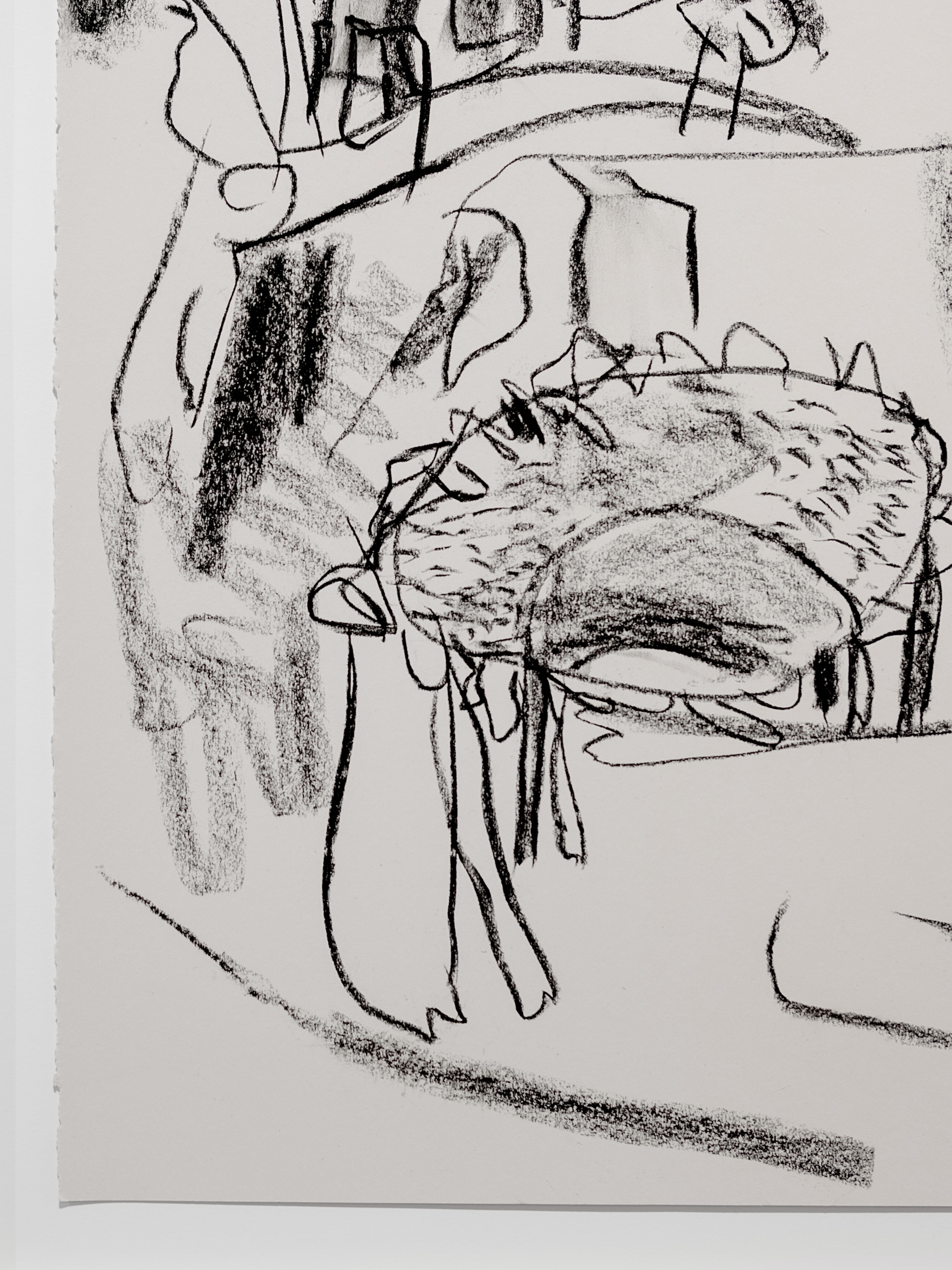
Inanna Through the Seven Gates (2024), detail; 22 x 30 2024, charcoal on paper

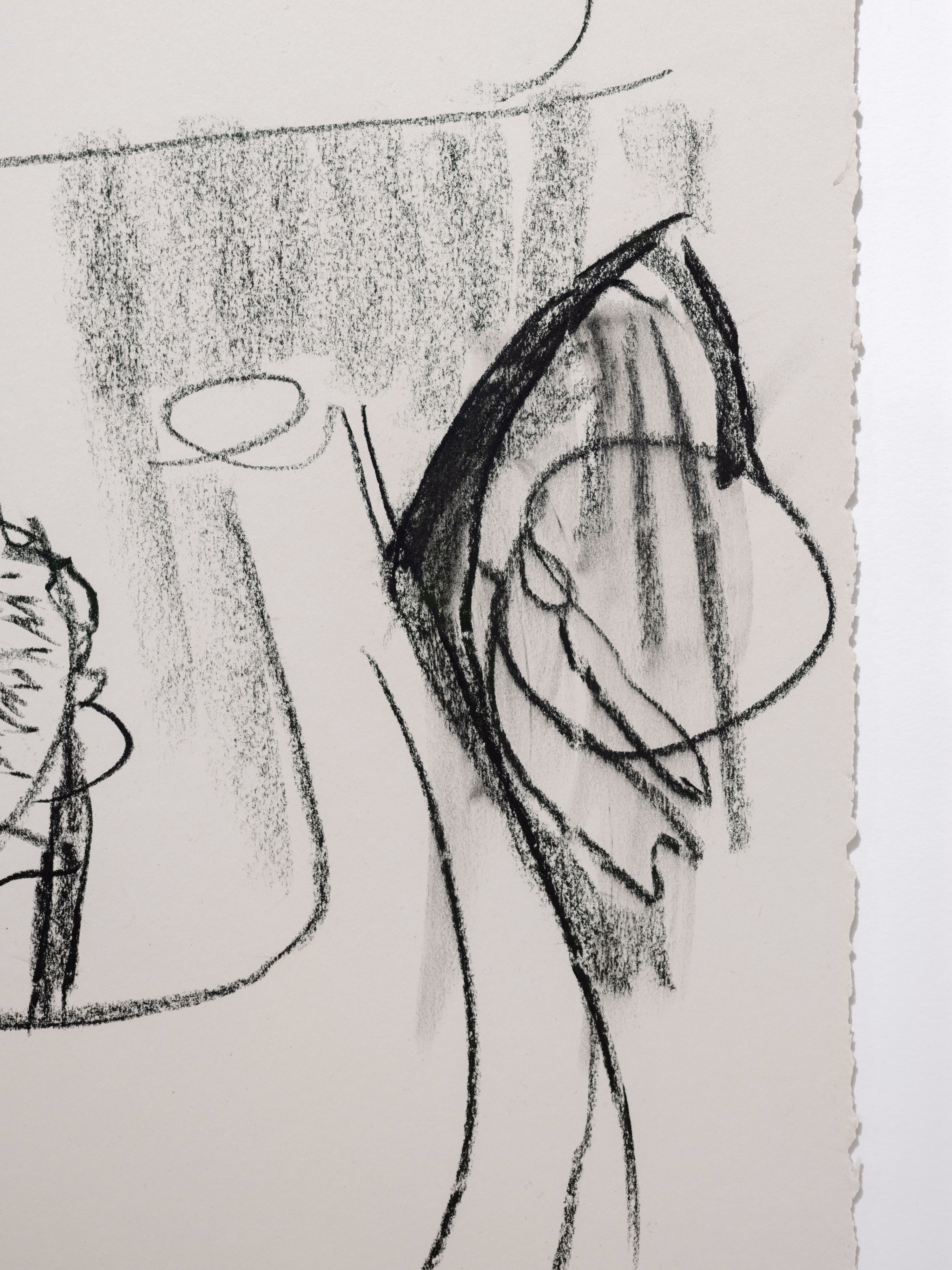

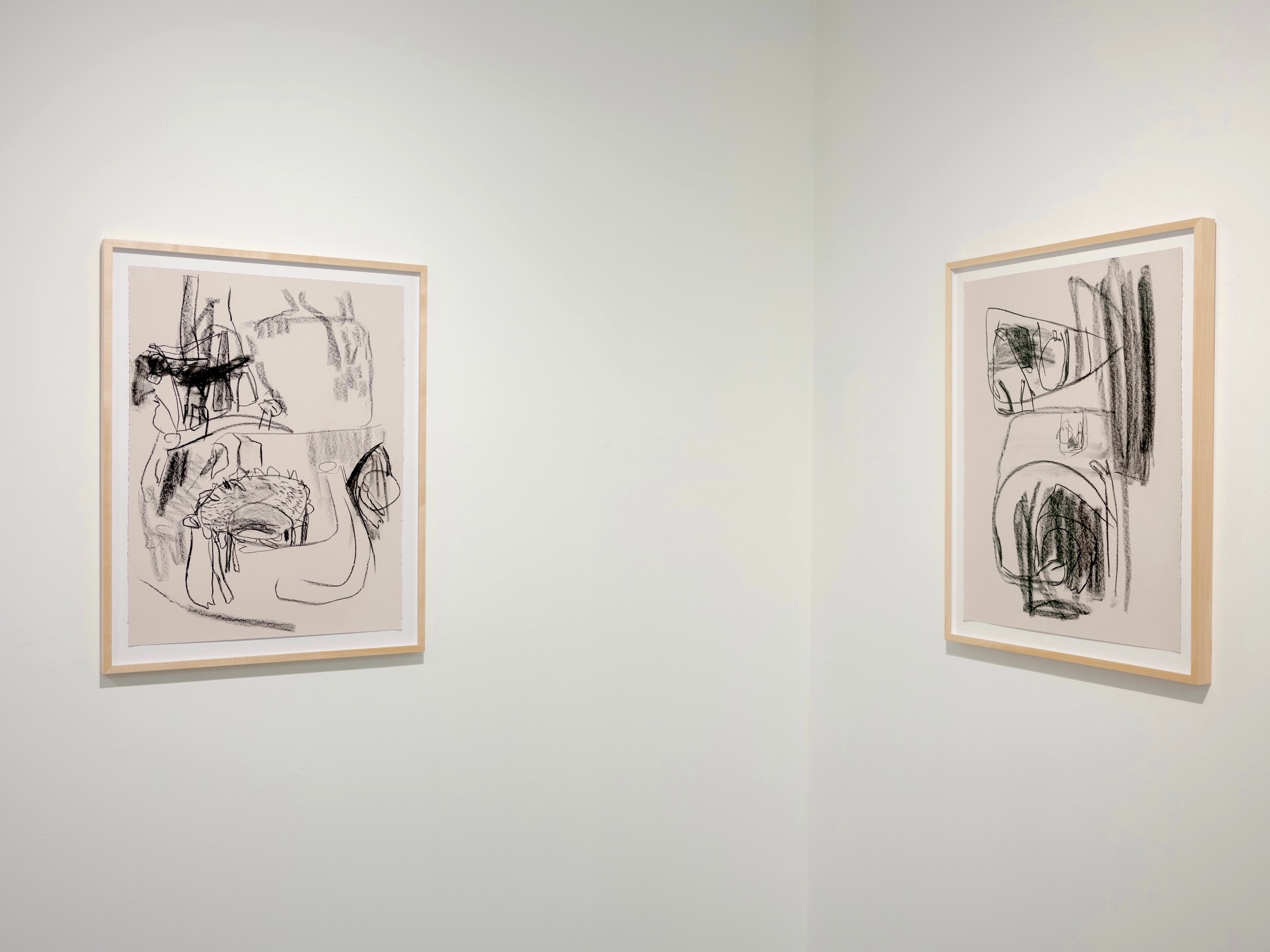




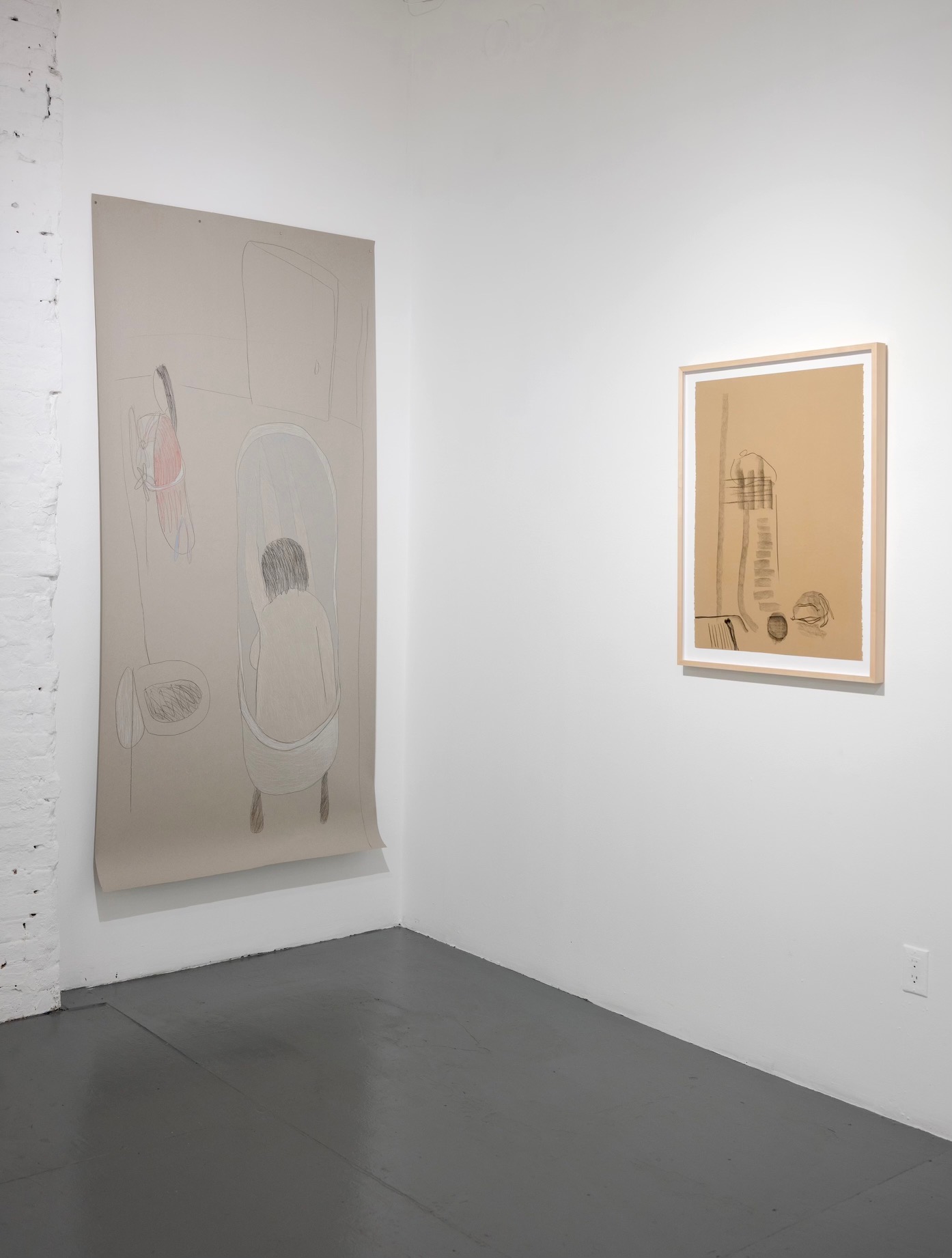


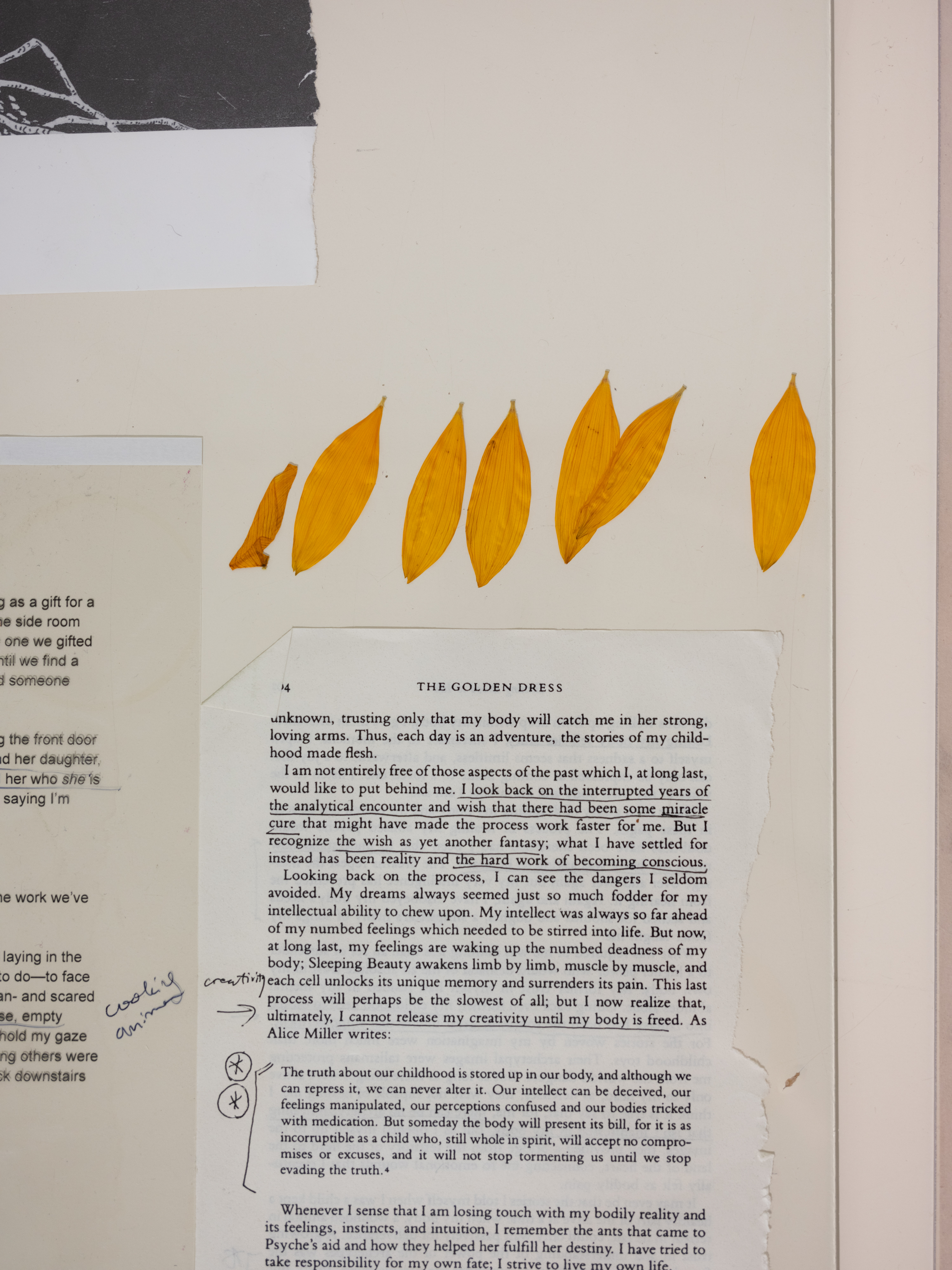









With thanks to the Ontario Arts Council.